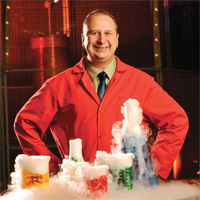Explore STEM
>> View Summer Camps!
A Successful Future
Talk with your kids about their interests. STEMisphere helps nurture curiosity in STEM -- science, technology, engineering, and math -- by providing you and your kids the resources needed to learn and grow.
Not sure how to begin? Let us help! View the complete list of STEMisphere resources now!
STEMisphere resources have met one or more of Carnegie Science Center’s quality-check standards:
- Content focuses on science, technology, engineering, and mathematics with an integrated approach.
- Programs targeting middle school or high school students include a career development component.
- Opportunities are interactive and hands-on.
- Curriculum supports skills such as: teamwork, communication, creativity, innovation, problem solving, and critical thinking via project-based learning.
Get Involved
It is important to get involved in any way you can. As a parent, you are the first and strongest advocate for your child’s education and future success. Explore these informational resources with your children to learn more about what they might want to do with STEM:
- The Pittsburgh Regional STE(A)M Ecosystem – Expanding opportunities and enhancing quality in STEM and STEAM Learning. The STE(A)M Ecosystem is a regional collaborative comprised of individuals and organizations who seek to equitably equip and empower learners to use S cience, T echnology, E ngineering, A rts, and M ath to better themselves and their world. We prioritize interdisciplinary learning and high-quality programming that is relevant to students’ lives and future careers. View STE(A)M Ecosystem Recommended Resources!
- STEMjobs.com STEM Jobs connects students to careers in science, technology, engineering and math by engaging them with what they love, like sports and music.
- Career Stories
- STEM in the News
- STEMisphere Resources
What does STEM look like in the classroom?
Advancing great teaching in STEM education requires a clear and comprehensive definition of STEM education, one with the flexibility to work across the STEM education spectrum. Based on its extensive experience, and supported by research on content and best practices in education, such as the National Research Council’s A Framework for K–12 Science Education: Practices, Crosscutting Concepts, and Core Ideas, Carnegie Science Center has determined that high-quality PreK–12 STEM education consists of the following essential components:
- Inquiry-based education: Integrating the most effective, research-based teaching strategies that use curiosity and inquiry as guiding principles.
- Integrated curriculum: Presenting curriculum in science, math, technology, engineering, literacy, art, and other content areas in an integrated fashion. The real world is not siloed bysubject content. Education should not be either.
- Project-based group learning: Engaging students in solving real-world problems, which encourage them to use 21st century skills such as teamwork, communication, creativity, innovation, problem-solving, and critical thinking.
- Career awareness: Exposing students to an array of STEM-related jobs through interaction with STEM professionals. Students learn how science and math concepts apply to the work environment.

